Knee pain
Knee pain is very common but rarely serious and most new knee injuries will improve over two to three weeks (and certainly by two to three months)
Some people do have issues which come and go over longer periods of time or with more specific activities (like bending, kneeling or coming down stairs) which can be caused by many things.
The knee is the largest joint in the body and is made up of bones, ligaments, cartilage, tendons, and muscles.

Common reasons for knee pain include:
Osteoarthritis
The most common cause of knee pain in those over the age of 45.
Symptoms can include stiffness to the joint in the morning or after rest, swelling and or warmth to the joint after prolonged use. For more information about osteoarthritis of the knee visit the Versus Arthritis website.
The video below from Keele University has some general advice on knee Osteoarthritis.
Anterior knee pain (also known as Patellofemoral Joint Pain)
Usually localised to the front of the knee around the kneecap, and often worse with use of stairs, walking up or down hills, sitting for too long, and squatting down.
Soft tissue
Strains, sprains and tears to the ligaments, tendons, cartilage, or muscle (sometimes from a fall, twisting injury, sport or just from an awkward movement).
Tendonitis
When a tendon (usually below the kneecap) swells up and can become painful with walking, running, being active or with sitting.
Most knee problems will improve over several weeks and the majority of people find relief without interventions, by following these simple measures:
Protection
Reduce further irritation to the knee and allow it to settle and heal. This could mean using a crutch or walking pole for a short period of time. Avoiding aggravating activities like twisting or sport until symptoms settle as well as modifying your activities in line with your levels of pain.
After this it is important to regain movement and slowly return to your normal activities as this will promote healing (Initially this may be at a reduced level or volume i.e. listen to your body). Suitable activities could include short walks, gardening, swimming or any active activity that you enjoy.
Pain relief
Adequate pain relief is important when recovering as it will often allow you to engage in movement and exercise with less discomfort. Simple over the counter pain relief is usually enough to help most aches and pains. Speaking with your GP or Pharmacist regarding pain relief options is recommended if you are unsure of options available.
Ice and elevation
If you notice swelling to the knee after exercise or general use, elevation and/or ice can be used to help reduce this. Elevating and/or icing can be used for 15 to 20 minutes at a time. Try to keep your leg raised above your heart for optimal effectiveness. Apply ice wrapped in a damp towel for 15 to 20 minutes to the area. Remove if it feels like it is burning to prevent injury (ice burn).
Physiotherapy
Physiotherapy can help your knee pain, depending on what has caused it and what part of your knee hurts. Treatment usually includes a programme of exercises made to your specific needs. Read more on our Physiotherapy and Occupational therapy service page.
- If the pain you are experiencing is getting worse rather than better, despite following the self-care guidance above.
- If you have had a significant injury or trauma to your knee which is painful to put weight on when walking, or if there is persistent or significant swelling or bruising after an injury.
- If you develop a hot and swollen knee joint for no apparent reason.
- If you feel unwell and suffer symptom like a fever or sleep disturbance in combination with your knee pain.
The following exercises can be done at home, two to three times a day. If any of the exercises are painful, then you can simply reduce how many you do or how often you do them.
Knee bending in sitting
- Sit up straight in a chair and look directly ahead of you
- Bend your knee as far as you can by sliding your foot backwards
- Cross your other leg over your ankle and use it to help bend your knee further
- Maintain the position and relax
- Do not slide forward nor allow your buttocks to lift up from the chair when you push your knee back.
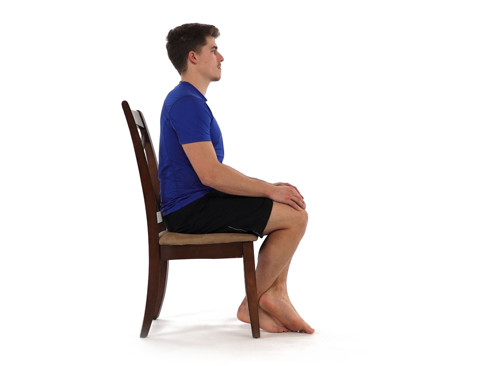
Knee straightening
- Lie on your back with a towel rolled under your ankle, or rest your heel on a foot stool while sitting
- Let your knee relax down towards the bed to straighten it as much as possible
- Relax your knee and repeat.
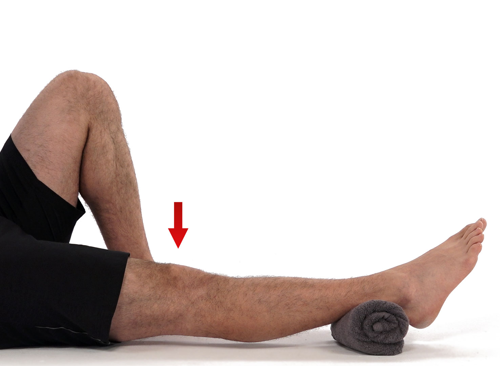
Inner range quadriceps
- Lie down on your back on a bed with a large rolled up towel under your knee
- Push your knee down into the towel allowing your heel to lift off the floor as high as you can without lifting the knee from the towel
- Hold for a few seconds then lower your leg slowly to the starting position and repeat.
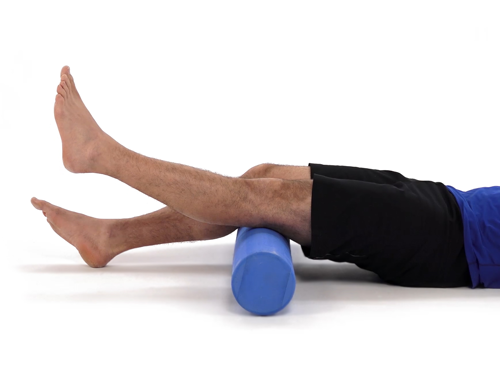
Straight leg raise
This is to strengthen the muscles at the front of your thigh.
- Lying on your back, tense your thigh muscle and lift your leg off the bed whilst keeping your knee straight
- Slowly lower back to the starting position
- You could also do this in sitting with the leg resting straight out in front of you.
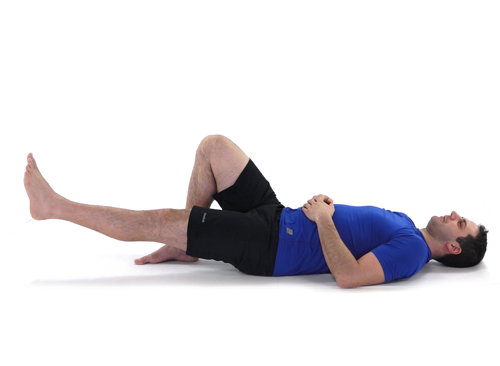
Sit to stand
- Sit on a chair that has been placed against a wall to prevent it from moving
- Fold your arms across your chest to stop you from using them.
With your feet slightly apart, lean forward, so your shoulders are over your feet and stand up fully - Slowly return to sitting
- To make this easier you could place cushions on the chair to raise it.
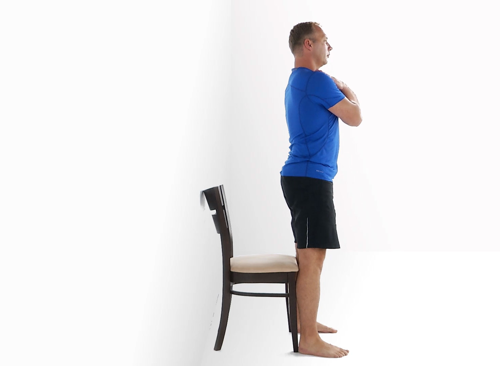
Bridge
- Lie on your back with your knees bent
- Squeeze your buttocks to tuck your bottom underneath you before lifting your hips off the ground until your body is aligned with your legs
- Slowly return to the initial position and repeat.
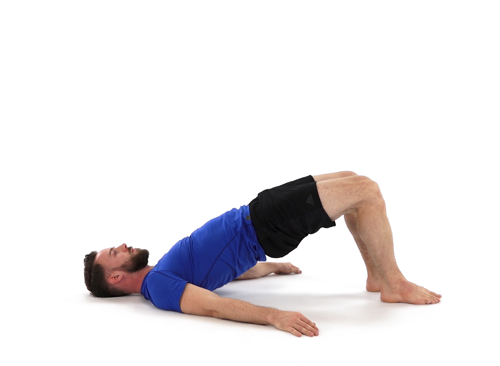
The Versus arthritis website also has some progressive knee exercises which can be started once your pain is controlled and they are designed to start improving your knee function. Take a look at their video below:
You can’t always prevent knee pain, however there are things which you can do to keep your knee and other joints as healthy as possible including:
- Moving - exploring movement with varied activity will keep your joints healthy whilst performing exercises to strengthen the shock absorbing muscles around the knee provides protection
- Keeping a healthy weight - aiming for a body mass index of 30 or lower will decreased pressure on our joints and help lower levels if inflammation in our body more generally
- Getting good sleep
- Managing stress
- Quitting smoking
- Drinking less alcohol
- Staying active
Being active helps you avoid long-term pain and serious health problems like diabetes, cancer, and heart disease. It also helps you live a longer, healthier life. Just like lifting weights makes your muscles strong, moving and exercising your knees makes them stronger and healthier. Start slowly and keep practicing to safely do things like bending and lifting.
Getting help for better health
Get free local help from Your Health Notts website to:
- Improve your fitness
- Lose weight
- Stop smoking
- Reduce our alcohol intake
Help with exercise
If you need help with exercise, ask your doctor about the GP Exercise Referral Schemes. These offer discounted classes at local leisure centres:
Information in this section is intended to be used as a guide. It gives you an idea about how knee pain can be managed. However, you should remember that every case is different, and symptoms and management can vary from person to person.






